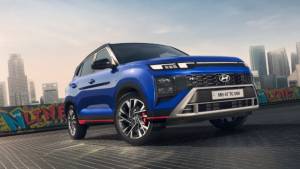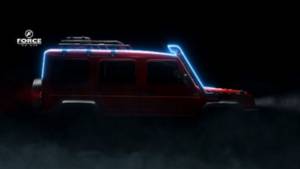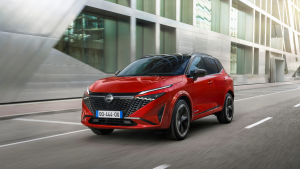Superbike sensation
Abhay Verma
Updated: May 09, 2013, 04:12 PM IST
Kawasaki has launched its all-new ZX-10R Ninja with eye-watering power claims and a chassis packed with race technology. The bike takes on the best in the superbike class â" astonishingly no longer from Japan, but from Europe, with BMW's S1000RR leading the way.
Kawasaki claims 200.1PS for its ZX-10R compared to BMW's 190bhp. While manufacturer spec sheets tend to be widely optimistic, BMW's claimed figure translated to almost exactly that at the back wheel. And Kawasaki's engineers appear confident their claimed figures will stand up on the dyno. As I write, no Kawasaki has yet been available for independent dyno runs, but the riding experience appears to back up the claims...
The Ninja is blindingly fast. You better hang on tight as you whack open the throttle; the bike takes off like a rocket ship. The linear power delivery keeps coming from 4,000rpm, turning into a crazy rush of speed at 8,000rpm, then from 11,000rpm sending you into orbit with lightening speed. The Ninja's engine, a 998cc inline-four with two fuel injectors per cylinder, is completely new and has been built to work with the chassis as well as produce tons of horsepower. The crankcase is specially positioned to optimise mass centralisation on the bike. To squeeze as much power as possible from the engine, the intake valves are larger with wider intake ports, revised exhaust port shapes, and a 0.6mm increase in valve lift.
A larger, reshaped airbox lets the bike breathe better, with the intake tracts positioned further forward to increase the effects of ram air. Kawasaki claims the Ram Air system boosts power output to an astonishing 207bhp on the move; this brings me back to the 1990s when Suzuki used to claim big increases in power on the go thanks to the ram air effect on its GSX-R 750 SRAD (Suzuki Ram Air Direct).
But back to the Kwak, and the cylinder has a special 'dsax' layout. This means the bores are offset by 2mm in relation to the crankshaft, giving less of an angle on the power stroke, reducing internal friction and allowing for lighter pistons to be used. And weight has indeed been saved throughout the engine, contributing to the bike's relatively low overall weight which we'll come to later. As you'll have heard, the first batch of 2011 ZX-10` had to be recalled due to a fault. The camshafts, valve springs and valve retainers have all been replaced, and Kawasaki has assured the press and prospective customers that this hasn't altered the bike's 197bhp performance. With the problem sorted the bike's expected in the dealers by the end of January. But back to the good stuff, and you won't have to spend loads of dosh on a full exhaust system if that's the kind of thing you usually do.
The exhaust header pipes are titanium and almost the same length and bore as the race system's, so simply removing the bulky catalyst and fitting an aftermarket end can will have the same effect. One noticeable aspect of the Ninja's performance compared to the BMW is that it demands to be revved harder. The spec sheet backs this up: the S1000RR has the same 112Nm peak torque figure compared to the Ninja ZX-10R, but this happens at 9,750rpm on the BMW compared to the Kawasaki's 11,500rpm. This means that on our roads the BMW will appear meatier, stronger lower down the rev range, where the torque figure is more useful. But don't get me wrong, the Kawasaki is still insanely powerful with plenty of meat on tap...
And power is easily controlled through the progressive throttle that, as we all know, works both ways. But if you're still worried about using all that power on the roads or on slippery track conditions, then you can tone it down via the three power modes selected from a handlebar button. 'Low' mode caps performance to 60 per cent, which means it should make around 118PS â" similar to a 600 supersport. 'Middle' mode gives you around 70 per cent of the available power that's also delivered less aggressively. And then there's 'Full' mode where the beast is unleashed to its full tyre-shredding performance. And it's not just the power modes that let you use the ZX-10R closer to its potential. The S-KTRC traction control that comes as standard, and is also available in three modes, lets you take liberties with the throttle mid-corner without the tyre breaking traction launching you into a dreaded highside. Instead, it'll give the average track day rider seasoned racer-type skills, the rear wheel drifting out slightly before the engine cuts in to control it.

The traction control also has an anti-wheelie system; yes, wheelies are cool, but if you want to go fast on a race track then the front wheel needs to be planted to the ground⦠The system seems to be rather inconsistent though, sometimes stopping the front end from coming up, other times letting you pull the mother of all wheelies. You can adjust how much anti-wheelie you want through the traction control settings.And the Ninja's transformation doesn't peak with the engine performance. The chassis is in a different league to that of any Ninja before it. And like the engine it too is all-new, from the aluminium twin spar engine to the innovative suspension.
The bike has a claimed weight of 198kg, and it feels so much lighter. As we touched on earlier, Kawasaki has worked hard on mass centralisation. Gone is the nervous and twitchy feel of the old Ninja, in its place is the balance and sure-footedness you'd expect from a Honda Fireblade. The Big Piston Forks give the front end acres of feel, and Kawasaki's new Horizontal back link suspension - where the shock is laid almost horizontal above the swingarm â" controls the bike beautifully, contributing to sublime handling. The Ninja goes where you want it to and gives a whole new meaning to holding a tight line, making other Japanese contenders feel clumsy and loose. On its standard out-of-the-crate settings, the bike brakes, steers and turns like a true race bike. Did I just mention brakes? The radial braking system is packed with feel and progression and will stop the bike safely and securely in no time no matter what top speeds you reach (300kmph anyone?). For added security and to let you brake well into the apex of every turn without threatening to lock the wheel, race ABS is available as an optional extra. The system works well and is unobtrusive, although it does add a few kilos to the bike's overall weight â" although it'll lighten your wallet by £1,000 (Rs 71,000 approx)!
The controls are super-slick, from the cassette-type gearbox to the slipper clutch that annihilates any rear wheel hopping as you slam down the gears.
As for looks, Kawasaki has turned its Ninja into a sexy head-turner, with tiny race-bike dimensions (the rearsets are adjustable to improve comfort on the road) and sharp lines reminiscent of MotoGP machines.
So it has the performance and the race technology. But is Kawasaki's 2011 ZX-10R better than the BMW S1000RR? Only back-to-back tests will tell. However it fares well price-wise in the UK, coming in at £11,948 (Rs 8.53 lakh approx) with traction control as standard (£12,969 (Rs 9.22 lakh approx) if you want race ABS), compared to the BMW's £13,270 (Rs 9.47 lakh approx) for the S1000RR with traction control and race ABS.
But Kawasaki's new ZX-10R is certainly in a different class to any Ninja before it, and leaves the Japanese contenders â" from Yamaha's YZF-R1 to Suzuki's once all-conquering GSX-R1000 â" looking like yesterday's bikes. The superbike class is going through a revolution.
Related Stories
Top Stories
Latest Videos
Most Popular
1
2
1
2
Network18 Updates
Compare














